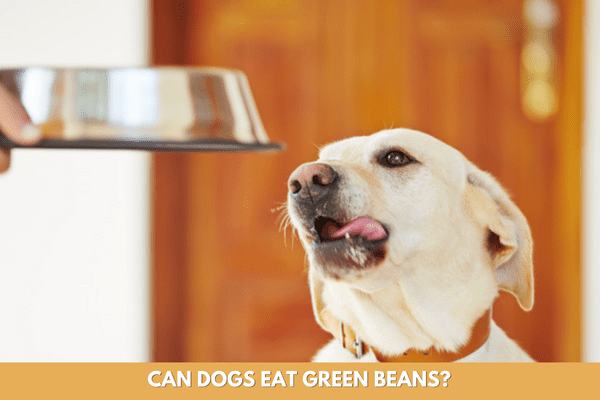Read our guide to learn how to teach a dog to leave it behind. It contains step-by-step directions and answers to common training issues.
Teaching your dog to respond to the “leave it” command can be crucial in keeping them safe from potential dangers. This essential skill helps your furry friend avoid hazardous situations by gradually teaching them to recognize and respond to the “leave it” command.
Dogs can become anxious and insecure when they lose their belongings, including food and toys. Therefore, teaching them to leave something alone is crucial. Moreover, the “leave it” command can be a valuable tool in preventing your dog from encountering perilous situations, such as approaching strangers, sharp objects, chemicals, or the aggressive barking of other dogs.
What Does “Leave It” Mean?
Teaching your furry companion the “leave it” command is a crucial skill to help keep them safe from potential hazards. This command trains your dog to ignore any item or object that may be harmful to their health, such as broken glass or medication.
The “leave it” command is a versatile cue that can be useful during walks, visits to the park, and playtime at home. It also promotes self-control and obedience in your dog, showing that they recognize you as the pack leader.
Learning the “leave it” command can be life-saving for your dog, especially if they come across something that may look tempting but could be toxic to them. It’s important to teach your pup to “leave it” right away because cocoa, leeks, and fruits are harmful to their health.
By teaching your furry friend the “leave it” command, you are promoting responsible pet ownership and preventing accidents and health hazards. This valuable tool can save your dog’s life, and promote discipline and obedience in their behavior.
When to Teach “Leave It”
When it comes to teaching your dog the “leave it” command, timing is crucial. Starting too early or late can hinder your dog’s learning and obedience. The appropriate age to begin teaching “leave it” depends on the individual dog and their level of training. After your pup knows “sit,” “stay,” and “come,” you can teach this command. Usually around 4–6 months.
Your dog’s readiness to learn “leave it” depends on several factors:
- Assess your dog’s level of focus and impulse control. If they struggle to concentrate on one task or have difficulty resisting temptations, they may not be ready for this skill.
- It’s also important to make sure your dog has a good foundation of trust and obedience with you before introducing this command.
- If your dog is still struggling with basic commands, it may be best to wait before introducing more complex skills like “leave it.”
Teaching Your Dog When to “Leave It”

Teaching the Concept of Leaving Objects in Hand
Before moving on to floor training, it is essential to teach your dog the concept of leaving objects in your hand until instructed. Begin by holding an object in your hand and telling your dog to “leave it.” Wait for a few seconds and then reward your dog with a treat from your other hand. Repeat this process until your dog understands the command.
Floor Training
Place a treat on the floor and cover it with your hand. Let your dog try to get the treat, and mark the moment when they stop trying. Reward your dog with a different treat of higher value than the floor treat. This will teach your dog that leaving certain things alone leads to the chance for better things.
Ignoring Uncovered Treats
The goal of floor training is to teach your dog to ignore uncovered treats. Remove your hand from the covered treat when your dog stops attempting to reach it. Be ready to cover the treat again if necessary. Mark and reward your dog with a higher value treat from your other hand if your dog looks away, leans back, or shows disinterest in the uncovered food.
Exercise Standing Up
Once your dog has learned to ignore uncovered treats, it’s time to exercise standing up. Place your dog on a leash and use your foot to cover the dropped food instead of your hand. The leash prevents your dog from getting accidentally missed or kicked food.
The “Leave It” Cue
Your dog has learned impulse control by not automatically eating food dropped on the floor. It’s time to move on to the “leave it” cue. Say “leave it” before dropping the food, and reward your dog with a higher value treat if they don’t eat it. After enough repetition, your dog should understand the meaning of the cue and respond appropriately. With consistent training and patience, your dog will learn how to leave things alone when instructed.
Steps for Teaching “Leave It
Teaching your dog to “leave it” can be a valuable skill for both you and your pet. However, it requires patience, consistency, and proper training. Here are some steps to help you teach your dog how to “leave it”.
Start with Basic Commands
Before attempting to teach your dog to “leave it,” it’s essential to establish a foundation of basic commands. Commands like “sit,” “stay,” and “come” are essential for creating a strong bond with your dog and building trust. Additionally, these basic commands can help prepare your dog for more advanced training like “leave it.”
Introduce the “Leave It” Command
Once your dog is comfortable with basic commands, you can introduce the “leave it” command. Begin by holding a treat or toy in your hand and showing it to your dog. Then, say “leave it” and close your hand around the treat. Wait a few seconds before rewarding your dog with a different treat or toy.
Practice with Everyday Objects
To help your dog master the “leave it” command, practice with everyday objects like food, toys, or household items. Start with easy items and gradually move to more challenging distractions. Remember to always reward your dog when they successfully “leave it.”
Gradually Increase Difficulty
As your dog becomes more comfortable with “leave it,” gradually increase the difficulty by introducing more challenging distractions. Practice in different locations and around other people or animals. Remember to always use positive reinforcement and never punish your dog for not obeying.
Teaching your dog to “leave it” takes time and patience. Breaking down the process into simple steps and using positive reinforcement can help your dog master this valuable skill. With consistent training and practice, your dog will learn to “leave it” on command, providing you with peace of mind and a well-trained pet.
Read more: Dog Training Commands List
Real-World Dog “Leave It” Training

It’s important to train your dog to ignore real-world hazards, such as food on the pavement or rubbish in parks. Teaching your dog impulse control and the “leave it” command is essential for their safety.
- To start, place low-value treats on the ground in a row, spaced several feet apart. Bring your leashed dog into view of the treats and say “leave it”. Walk past the treat row and reward with a high-value treat for ignoring floor treats. Be sure to quickly cover any floor treats with your foot if needed to prevent your dog from accessing them.
- Once your dog is successfully ignoring individual treats, give the “leave it” cue when they are ignoring the entire row. As you walk past, reward your dog with something special for successfully ignoring the row. Demonstrating that ignoring things leads to something even better can help reinforce the behavior.
- It’s important to practice the training in various locations, such as the sidewalk or yard. Doing so helps your dog respond better in any location and reinforces the “leave it” command.
- As your dog becomes more proficient, replace the food on the ground with items they love, such as chew toys and tennis balls. This helps your dog understand which items they should not take, reinforcing the “leave it” command.
Your dog must be reliable with the “leave it” cue before using it with real-world distractions. It’s important to use a highly valuable reward when working with distractions and to keep your dog on a leash to prevent running after distractions. If you know your dog won’t respond to the cue, don’t use it; instead, go back to training and work the distraction into your routine.
With consistent training, your dog will learn to control their impulses and ignore food on the ground. The “leave it” command gives you control over what is safe for your dog to eat. Additionally, expanding the meaning of the cue can enable control of your pet’s behavior and safety. Training your dog to leave things alone can also prevent dangerous situations and keep them out of harm’s way.
Common Challenges and Solutions
Training a dog to “leave it” is difficult, and many pet owners struggle. These obstacles can be solved with patience and persistence.
Dog Doesn’t Understand the Command
One of the most common challenges is when a dog doesn’t understand the “leave it” command. This can happen for several reasons, such as the dog lacking sufficient training or not being motivated by the rewards being offered. To make the command clearer and more consistent, use a consistent hand signal or verbal cue and offer high-value rewards that your dog is motivated to earn.
Dog is Easily Distracted
Distracted dogs make it hard to teach them. Create a distraction-free training atmosphere. Teach your dog in a calm place with hurdles to shut out diversions. Start with basic obstacles and steadily increase the challenge.
Dog is Stubborn
Some dogs can be stubborn when learning new commands, including “leave it,” making it challenging to motivate them. To overcome this, find what motivates your dog and use that to reward good behavior. High-value treats or toys, as well as positive verbal praise and affection, are some great ways to motivate your furry friend.
Dog is Aggressive
“Leave it” teaching can be hazardous for both dog and owner if pets act aggressively. If this occurs, emphasize pup and human safety. Consult an expert teacher or behaviorist to identify the cause of the hostility and provide safe training methods.
Benefits of Teaching Dogs the “Leave It” Command
Teaching your dog the “leave it” command has numerous benefits that can greatly enhance your dog’s behavior and safety. One of the main benefits is that it can promote peaceful behavior and prevent fights. Dogs are less likely to become protective or violent when they learn to leave things alone, which can lessen disputes between dogs or between dogs and their owners.
Teaching “leave it” can protect your dog from harmful public snacks. Dogs are nosy and may eat trash, rotten food, or even poisons or drugs they find on the ground. Teaching your dog to leave things alone can avoid them from eating something harmful.
Teaching your dog the “leave it” command can enhance their overall quality of life and potentially even save it. In emergency situations, “leave it” can save your dog’s life if it’s about to eat something poisonous. Even in everyday situations, such as when encountering other dogs on walks or when encountering distractions, the “leave it” command can make your dog’s life safer and more enjoyable.
Conclusion
Teaching your dog to leave it is an important skill that can help prevent fights, safeguard your furry friend from unhealthy street treats, and enhance their overall quality of life. By following the steps outlined in this article on “How to Teach a Dog to Leave It,” dog owners can break down the process into simple steps and use positive reinforcement and patience to successfully train their pets.
It’s crucial to start with basic commands, introduce the “leave it” command clearly and consistently, practice with everyday objects, and gradually increase the difficulty of training. There are remedies for common issues like pets that don’t comprehend the order or are easily diverted.
With dedication and perseverance, dog owners can empower their pets with the valuable skill of leaving things alone when needed. So why not start today and help your pet become a well-behaved family member?
FAQs of Teaching Your Dog to Leave It
What is the best age to teach “Leave It” command to a dog?
It is recommended to start teaching the “Leave It” command to a dog as early as possible, usually between 8-12 weeks of age. Puppies are more receptive to learning and can develop good habits if trained consistently and positively.
Can a dog be trained to “Leave It” without using treats?
A dog can be trained to “Leave It” without using treats. Positive reinforcement, such as verbal praise or a favorite toy, can be used instead of treats. Treats can help teach and reward good conduct, though.
How long does it take to teach a dog to “leave it”?
Depending on the dog’s age, disposition, and training, teaching “Leave It” can take time. A dog may take weeks or months to learn the “Leave It” command.
Can you teach an old dog to “leave it”?
You can teach an old dog to “Leave It”, but it may take longer to train than a younger dog. Older dogs may have developed habits that need to be overcome, but with patience and consistency, they can learn new behaviors.
What if my dog still goes after something after I tell them to “leave it”?
If your dog still goes after something after you tell them to “Leave It”, it’s important to stay calm and redirect their attention to something else. Reinforce the “Leave It” command with a positive reward when they respond correctly. It may take time to get regular effects. If you’re having trouble teaching, consult an expert dog trainer.

